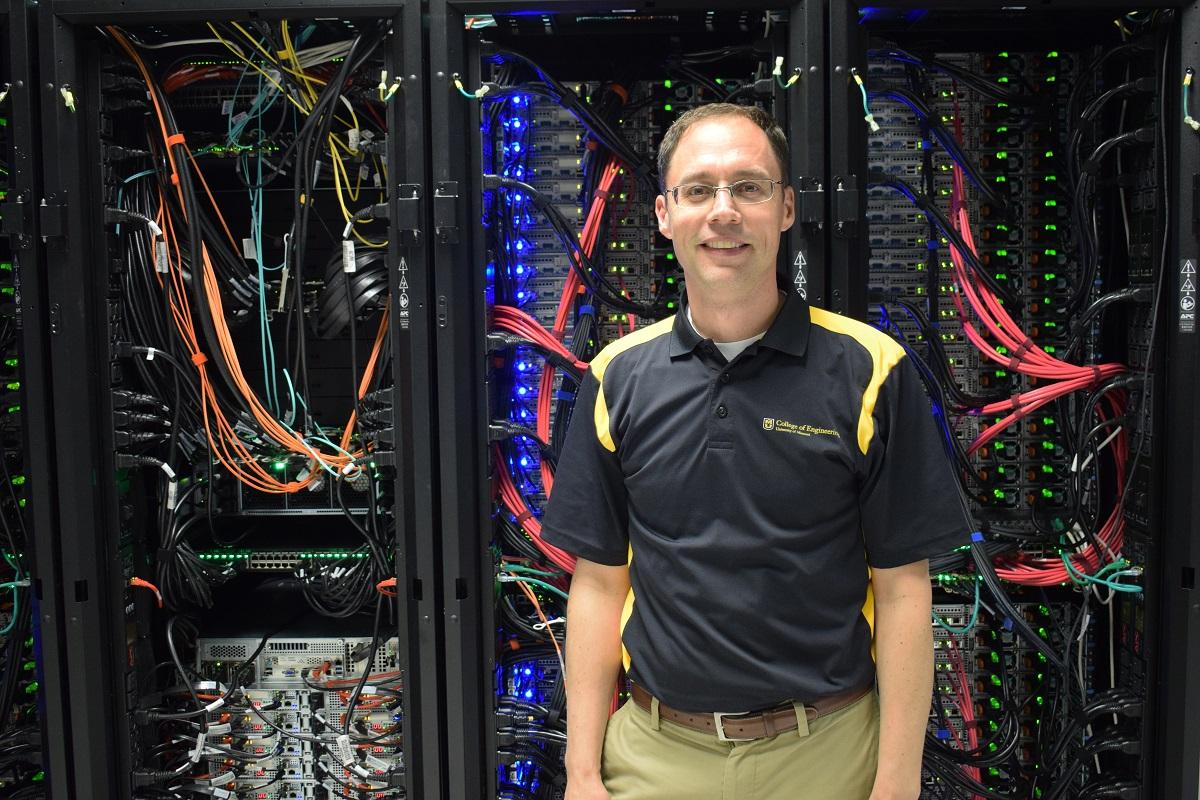
Without cyberinfrastructure, researchers would face restrictions on their studies. Cyberinfrastructure significantly helps speed up the process of experiments and computation.
The National Science Foundation gave a $1.4 million grant to Timothy Middelkoop, director of Research Computing Support Services, and his team of cyberinfrastructure experts on Sept. 12. The grant money will help MU develop cyberinfrastructure across the Midwest, allowing for research on other campuses to run more smoothly and not get left in the dust.
Cyberinfrastructure helps with researchers’ data management and storage.
“Cyberinfrastructure is all about building infrastructure to support research and discovery,” Middelkoop said. “So, if you think about how does that change the way we do research — if your computing takes 28 days to run, that means you get to do 12 experiments a year. If you do it every day or so, that means you can do 365 experiments a year.”
The grant money will go toward travel expenses for experts to learn or consult at cyberinfrastructure conferences. In addition, the money will contribute to funds that also go toward regional conferences.
“What we’re trying to do in this project is we’ve been building a beautiful cyberinfrastructure on Mizzou’s campus, and now we want to basically take those good ideas on how to build a good cyberinfrastructure to other campuses,” Prasad Calyam, director of Cyber Education and Research Initiative, said.
In order for a university to have a good cyberinfrastructure, a person must build a team, figure out the type of data storage, the costs, reliability of the storage and more.
“That’s a very daunting process for somebody who is maybe a team of one,” Middelkoop said. “So, the cyber team helps them step through that process to help them, as a mentee, learn about it and point them in the right direction.”
Even though the money will go to MU, the grant will have an impact across the Great Plains Network as Middelkoop’s team goes out and consults other universities on their cyberinfrastructure. GPN helps connects universities in the Midwest and Great Plains to collaborate on cyberinfrastructure. GPN includes universities in Arkansas, Missouri, Oklahoma, Nebraska, South Dakota and Kansas.
“[The grant] will increase our stature with our peers,” Middelkoop said. “We will continue to be seen as a leader in some of the things that we do. We can reach out to our community and get responses on how we can help solve issues that researchers may have.”
On the other hand, with complex cyberinfrastructure comes complex security.
“If it’s a strictly closed system, it’s too much security,” Calyam said. “It’ll take a long time to get anything done, so in an airport right, you want to get to the flight quickly but there are so many security checks along the way. It slows you down.”
Too little security can also present problems.
“But if there’s no security … there’s risk of essentially being exploited or text being revealed if there’s not enough security,” Calyam said.
This security process is another aspect researchers like MU Ph.D. student Samaikya Valluripally would get help with from a cyber team. Valluripally is working with Calyam on studying the impact of user experience with high security and low security in websites.
“This is helping other people grow their garden based on how we know to grow our garden,” Calyam said.
_Edited by Laura Evans | [email protected]_